Is This Exhibit the Reason Kim Kardashian West Is Wearing Vintage Mugler? A First Look Inside “Thierry Mugler: Couturissime”
Mugler exhibit gallery
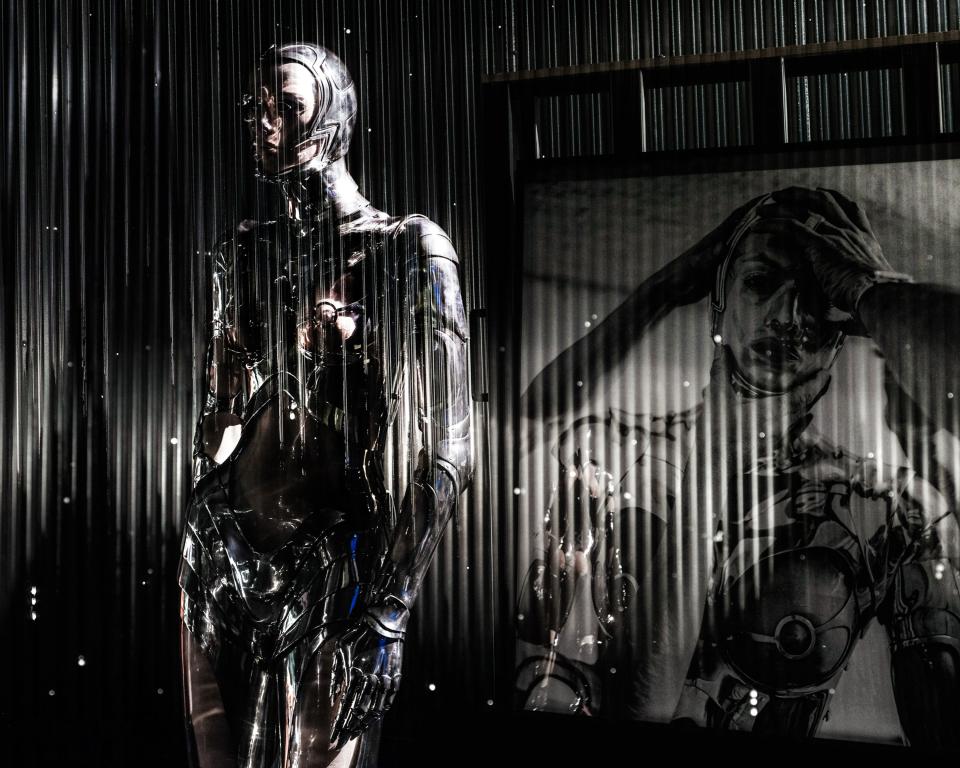
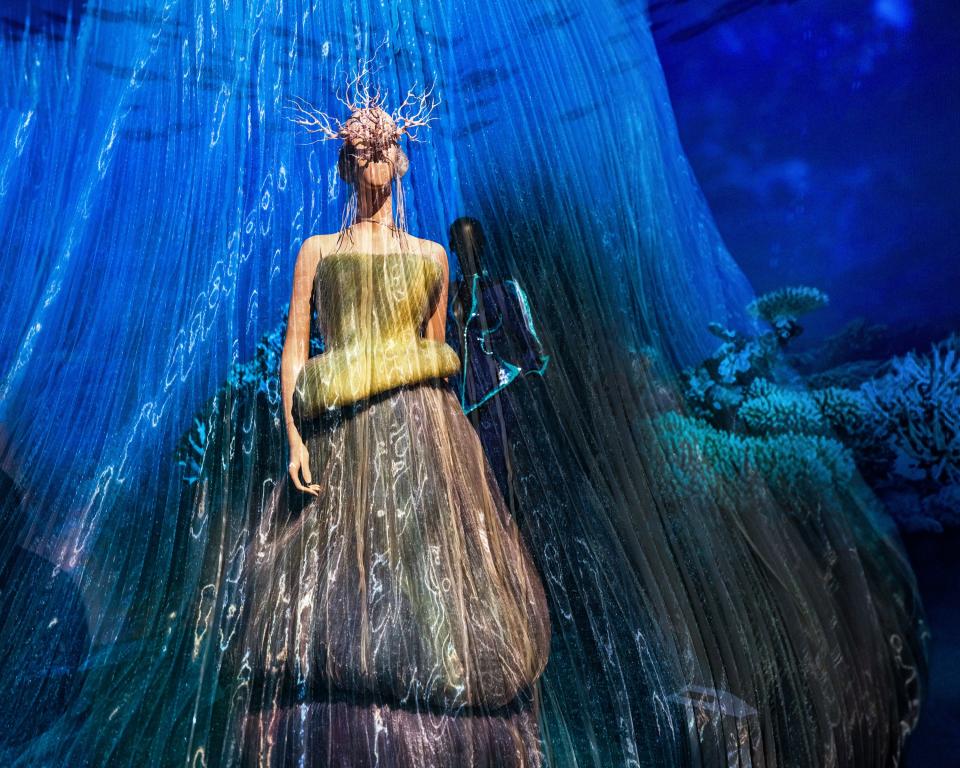
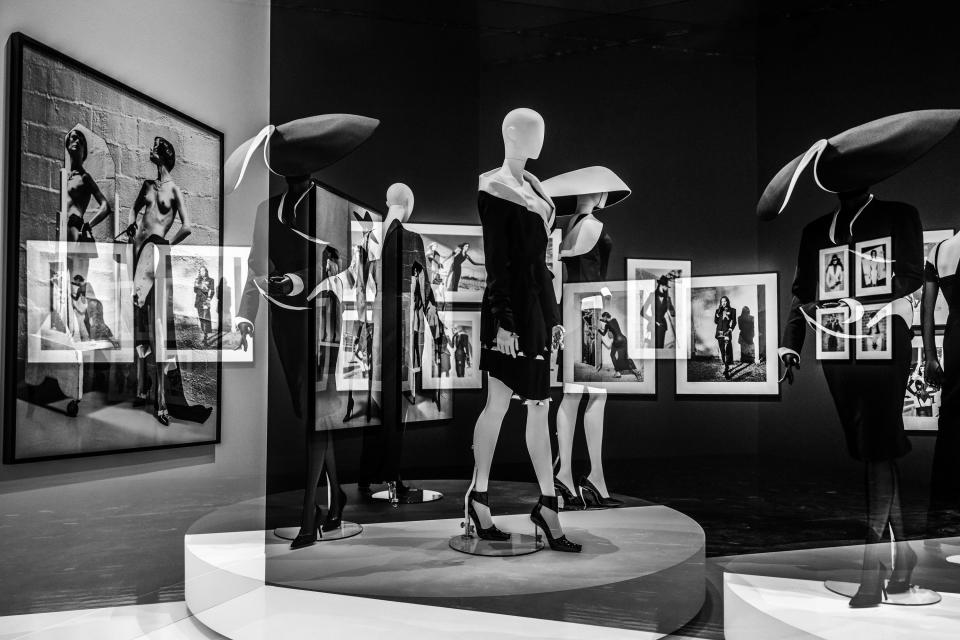
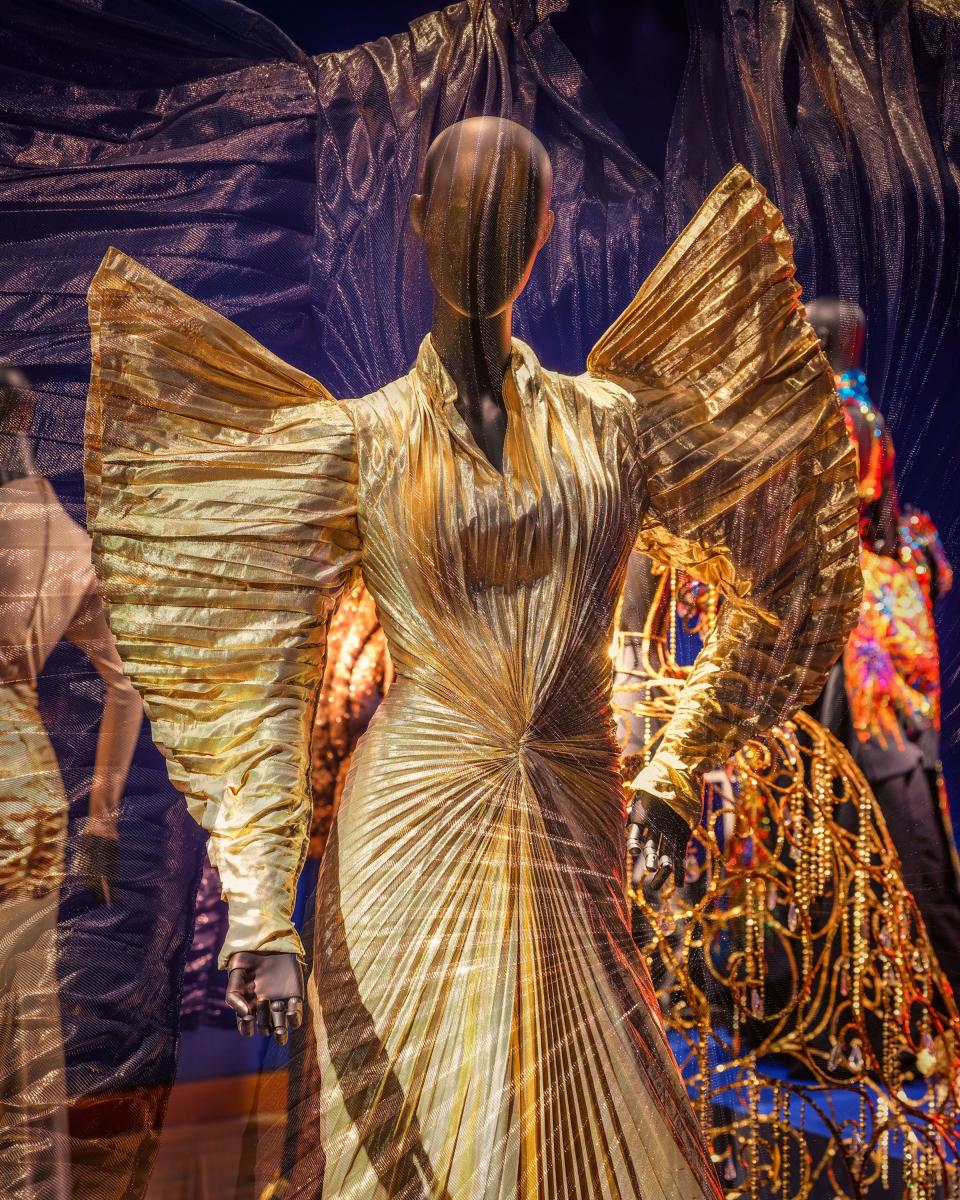
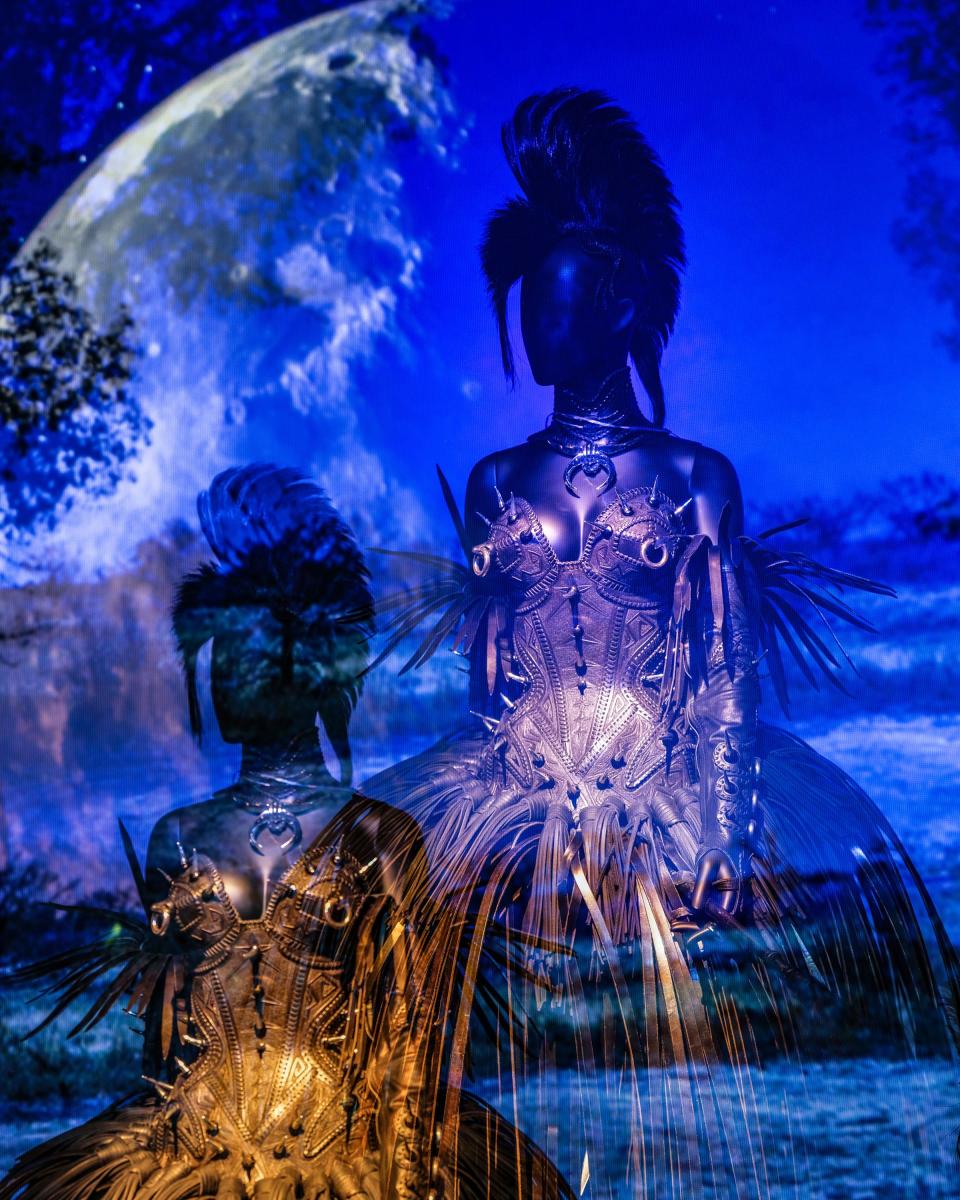
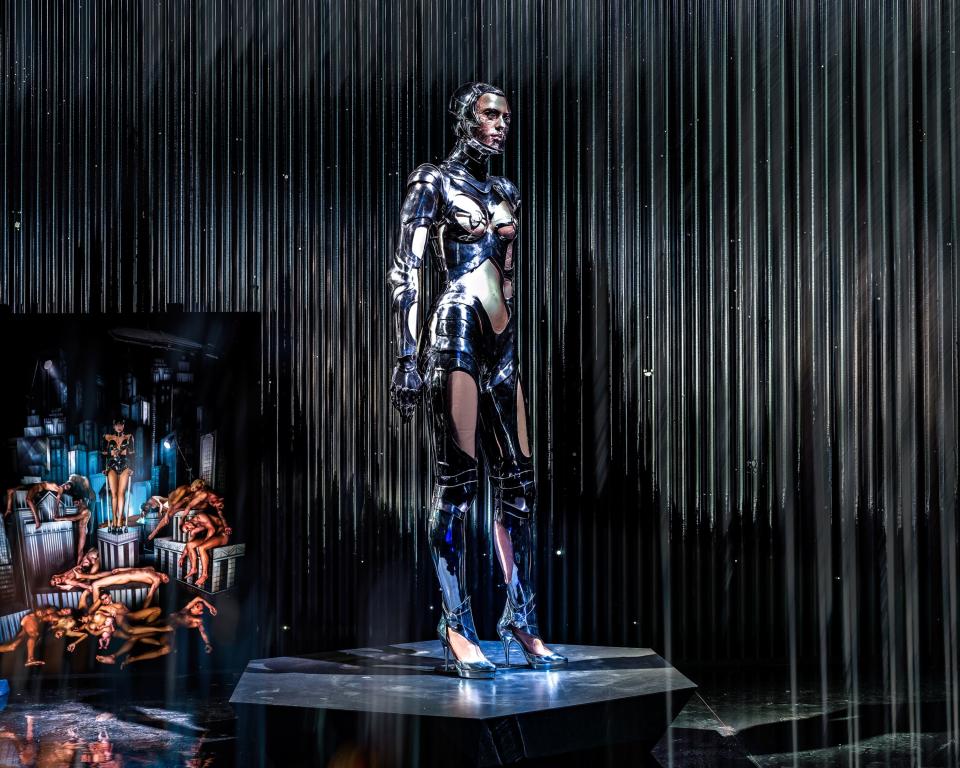
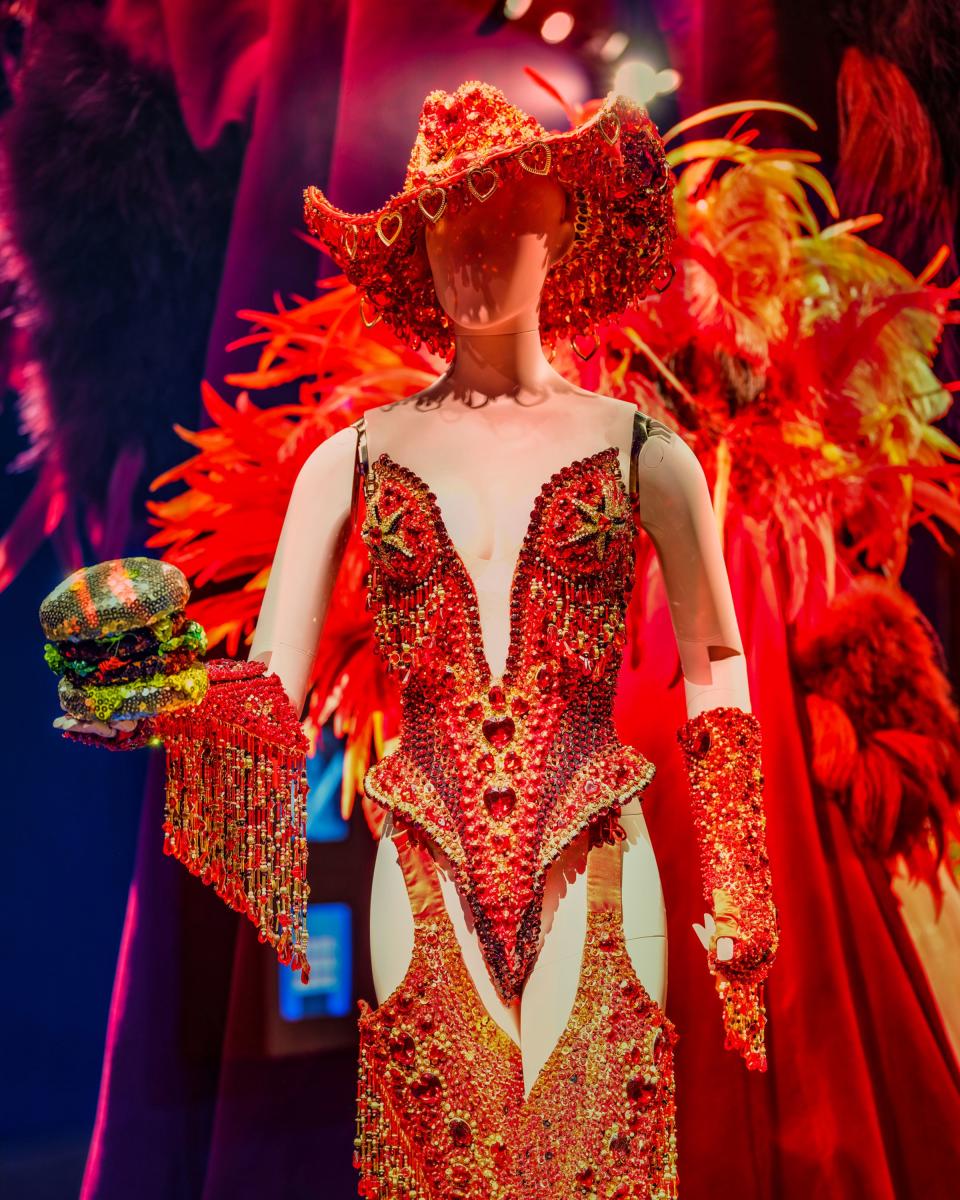
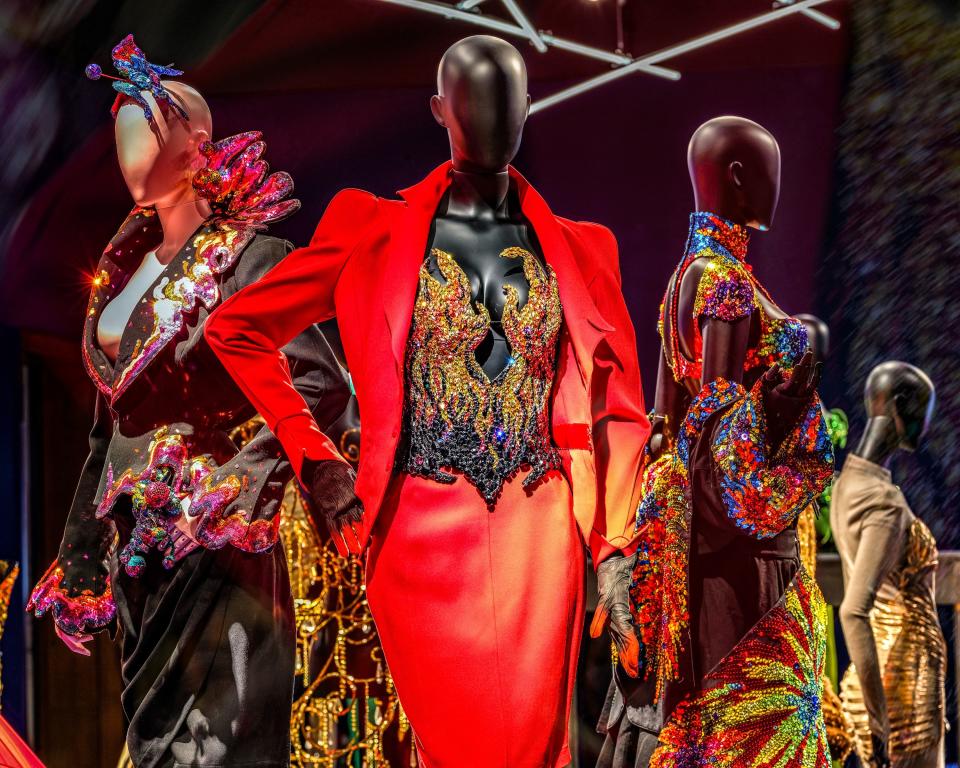
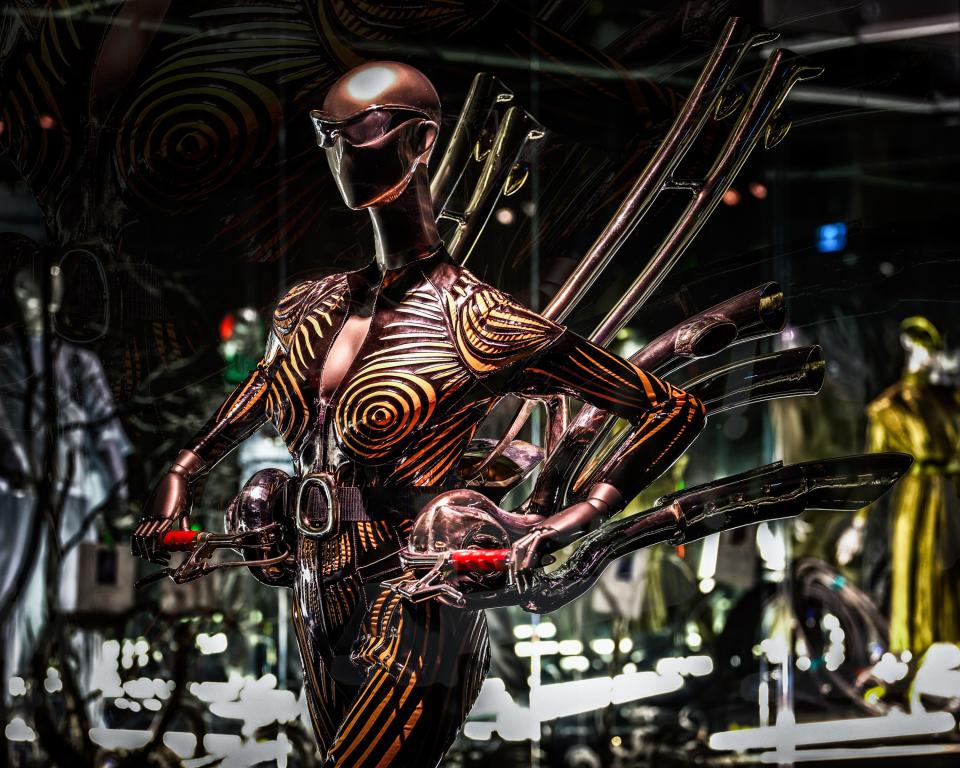
A new exhibition, “Thierry Mugler: Couturissime,” opens at the Montréal Museum of Fine Arts on March 2, and if its curator Thierry-Maxime Loriot’s previous success is any indication, “Mugler” is going to be a smash. Loriot’s track record includes retrospectives on Viktor & Rolf and Peter Lindbergh, as well as “Jean Paul Gaultier: From the Sidewalk to the Catwalk,” which debuted at the MMFA in 2011 then went on to attract more than 2.3 million visitors in 14 different venues from Brooklyn to Seoul.
The show begins with a display of 16 lavish stage costumes Mugler designed for the 1985 Comédie-Française production of Macbeth, many with over-the-top shapes and details that foreshadowed much of Mugler’s work to come. Next up is a homage to the two versions of the video for “Too Funky,” one directed by Mugler and the other directed by the late George Michael. From there, the exhibition’s subsequent sections are dedicated to femmes fatales, Mugler’s collaborations with Helmut Newton, and his galaxy of celebrity dressing from David Bowie to Lady Gaga. The last two sections, “Metamorphosis” and “Gynoid Couture,” are a deep dive into the robot bustiers and insect couture for which Mugler is best known.
For fashion history buffs, this Mugler show is a mouthwatering proposition—the shoulder pads! The PVC! The motorcycle bustiers!—but for pop culture aficionados, it’s also an education about some high-profile celebrity dressing we’ve noticed in recent weeks. Kim Kardashian West’s revealing black velvet number from the Hollywood Beauty Awards was a Thierry Mugler piece, as was the “python” dress she wore on The Tonight Show. As visitors to the exhibition will find out, the latter was not actually made from python leather, but from python-effect beading. “Mugler did not use reptile materials,” Loriot told us. “He tried to mimic those skins with fabrics, which was daring for the ’90s because using those materials was a sign of luxury and success.”
There was also a taste of Mugler on the Grammys red carpet: Miley Cyrus wore a black Mugler suit, and not only was Cardi B’s resplendent look a vintage Mugler haute couture dress from 1995, it’s already been shipped to Montréal, freshened up, and will be shown in the exhibition.
When asked if all this celebrity dressing was perhaps a covert part of some viral marketing campaign for the exhibit, Loriot was mum on the details, but he did give us an interview about distilling 40 years of Mugler history into a single museum show, as well as an exclusive first look inside the exhibition.
(Oh, and since we spoke to him, it’s been confirmed that Kardashian West, Tyra Banks, and Pat Cleveland will attend the exhibition’s opening party tonight.)
What was it like to collaborate with Mr. Mugler on this show?
He was very available and open. He is not nostalgic—that’s part of why he decided to work with us at the Montréal Museum of Fine Arts. I have a different approach to other curators who are more chronological. I think a thematic approach is very lively, and even now when we look at the clothes he did 20, 30, 40 years ago, he’s not nostalgic. Manfred refused some of the most prestigious fashion museums in the world for the last 20 years, but he said yes to us because when you’re editing 40 years of work, you have to really love the people you’re doing it with.
What did you learn from the Jean Paul Gaultier and Viktor & Rolf exhibitions that informed this one?
I think by doing more and more exhibitions, I learned to collaborate. Designers like Mugler and Gaultier came up creating in abundance and showing collections designed to be shown for one hour, and nowadays the format is completely different, changed to a 12-minute show. I bring my ideas about how we can edit and focus on creating a sort of album of “the best of.” It’s about collaborating and exchanging creative universes that feel familiar to the subject.
Technology is featured prominently in the Gaultier exhibition, with the use of holographic projections which made the mannequins “talk.” Will technology feature prominently in “Mugler”?
People don’t go to the theater anymore because they have Netflix at home, and they don’t go to bars because they have dating apps instead. You have to make an exhibition an experience for people, and it’s also nice to translate this universe to a wide audience of people. When putting together this show, Mugler was not nostalgic. He’s kept thinking about how he would have made these things for today, so that’s why we worked with different cinematographers and artists: to create these virtual realities to put his work in a new context.
What makes the Mugler universe different from the universe of other designers?
The world of Mugler is a bit like Rei Kawakubo or Viktor & Rolf or Iris van Herpen—it’s a way of creating that doesn’t really exist in the fashion world these days. Today is more about selling and perfumes, it’s almost like fast fashion in the luxury industry. It’s not about creation and freedom as it was in the ’70s and ’80s. Mugler completely changed fashion history because he brought so many unique creations into the world, and this exhibition is good for people to remember what he brought to fashion.
What are some of the developments that Mugler should be remembered for?
The bouton pression, the snap button—he was the first to use it in luxury goods, and it really changes what can be possible with silhouette. Also, the body-conscious silhouette. When hippie fashion was on in the 1970s, Mugler created this world without men where women were very powerful. In the context of today, it’s very important to see how he was putting women to the forefront, and it was a very strong message that they could be in control of their own attitude. Mugler is someone who created his universe based on his own fantasy and created without adding reference. Like, today you say something is “very Chanel” or “very Dior”—he created a new look for contemporary fashion.
What was the most difficult part of curating this exhibition?
The most difficult thing is to not fall into the cliché. Most of the time when people talk about Mugler, they remember big shoulders, small waist, PVC pants. That’s like, three percent of his work. For example, he did all these incredible things with sequins and fabrics. He had an approach that was all about fantasy—how can I make glasses that look like a fly’s eyes or a hat that looks like a beehive or a jacket that looks like a nest? He used rubber and latex and PVC, which is very trendy now. His influence is huge. One of Mugler’s first covers for Elle France was with fake furs.
Why is Mugler relevant today? What can fashion learn from Mugler?
The legacy of Mugler is about innovation and creativity and mostly about freedom. He brought a lot of freedom to the creative world, the idea that you can basically create whatever you want and not listen to everybody else’s ideas. It’s important for a young generation to understand how fashion was created back then, and that it’s important to be different. You can make something that isn’t following trends and still be successful. It’s beautiful and necessary that a young generation sees this message. We should also credit Mugler with rejuvenating haute couture when he started it in 1992; even Lee McQueen once said Mugler was one of the biggest influences in his work.
It can’t be a coincidence that Kim Kardashian West has been wearing vintage Mugler lately. And Cardi B. And Miley Cyrus.
Mugler is timeless! Beyond that, you’ll understand when you see the show. But I will say there’s always this excitement about Mugler clothes being pieces that are timeless and exist beyond trends. There aren’t many designers who can claim that.


